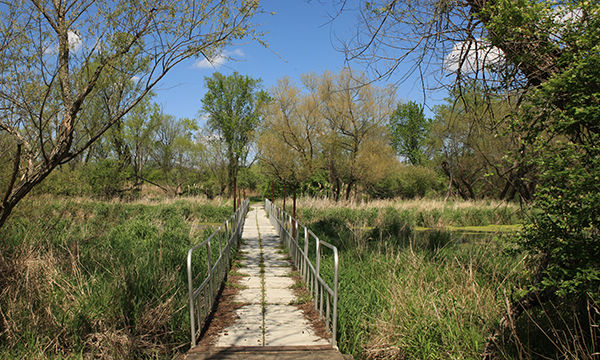Well-designed parks and trails are valued parts of the environment. They can promote physical activity and community engagement while providing environmental and mental health benefits. Parks can also help reduce stress. In addition, an important interaction between parks and health is through physical activity, which in turn can improve health outcomes.
Rep. Ryan Spain (R-Peoria) passed his first bill back in 2017, and it involved a bipartisan measure to allow volunteer work to be performed at Illinois State Parks.
“This commonsense legislation allows volunteers to create an Adopt-a-Trail program, as well as allow volunteer work at state parks and trails,” Rep. Spain stated. “Included permissible activities include spring cleanups, accessibility projects, special events, trail maintenance, enhancement, public information and assistance, or training. My intention is not to take away work historically done by state employees, but rather to allow supplemental efforts to help keep our state’s natural resources in even better shape for future generations, further allowing Illinoisans to invest in our parks with sweat equity.”
Rep. Bradley Fritts (R-Dixon) passed his first bill, also related to parks, this past spring to allow the Dixon Park District to install solar panels on its property. The bill had seven bipartisan co-sponsors in the House and passed unanimously.
“This bill was a local initiative brought to me by my constituents,” Rep. Fritts stated. “I am thankful I was able to make a difference in my own community. Parks can be an important component of a community’s success, especially when its leaders push innovative solutions that save taxpayer dollars.”
Illinois has 41 state parks, 17 state wildlife areas, 11 state recreation areas and six state forests. The Illinois State Park system encompasses over 475,000 acres of land, and nearly 44 million visitors come to an Illinois park each year. Most cities and villages in Illinois have land designated for parks, and larger cities have multiple parks and recreation areas.
Illinois offers over 270 trails that cover more than 700 miles, the largest being the 155-mile Hennepin Canal Parkway, followed by the 50-mile Illinois and Michigan Canal that stretches from Rockdale to LaSalle, and the 27-mile Rock Island Trail. Trails are located in all regions of Illinois, and hiking on these trails can bring physical exhilaration and the mental lift that comes with being in touch with nature.
Eleven state areas offer trails for visually impaired hikers or for the physically disabled. Visitors to parks and trails should stop at the visitor center or park office before venturing out onto the trail. Grab a trail map and learn about the specific regulations of the area you will be in. It is very important to gain information about trail conditions to ensure a safe and enjoyable hike. Also, make sure to wear proper clothing and have appropriate shoes that can handle the terrain.
Parks and trails can improve health in several ways, including increased physical activity, improved mental health, reductions in air and water pollution, providing a community meeting space, and reducing injury risk by providing safe spaces for people to play and exercise.
Parks increase tourism and generate sales activity, with much of the economic activity coming from local residents. Nearby restaurants and businesses located near parks show increases in customers when events or games are held. Recreational tourism also generates economic activity, even in small communities.
